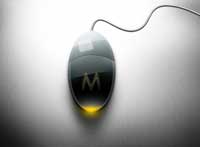
Many companies that want to stay ahead of the curve online get an infinite scroll website, which can be visually appealing and great for mobile surfing but is not good for SEO. The way an infinite scroll site works is that before someone scrolls, the content below already starts loading so people get to view more content without having to wait.
A few popular websites that have infinite scroll are: Twitter, Pinterest, and Mashable. These sites are great for browsing forever on end without changing pages. Even though there seems to be endless content, the structure of infinite scrolls is not SEO-friendly.
Search Engines Can’t Crawl
Infinite Scroll
The biggest SEO challenge for infinite scroll sites is indexing. Built with JavaScript, search engines like Google does not allow JavaScript download to show any content below the fold because the content does not actually activate until someone manually scrolls or clicks “Next.” So, everything you see when a site loads and before scrolling is all search engines can crawl.
How to Apply SEO to Infinite Scroll Websites
Thankfully, there are ways around indexing infinite scroll websites to help with search engines so that your site will actually rank somewhere. The first step is to build internal links between the pages that exist for Google to detect and index. A good way to do this is to link to a related page throughout the content as sources or suggested a related post.
Next, use classic pagination where applicable to help with more internal linking. Choose large pieces of content that can be divided into unique segments to place REL and CANONICAL tags on. These pages must have at least one other page to click to via “Next” or a handful of numbered pages like a blog roll would.
Build a menu that includes links to the most important internal pages that a person would be interested in. It is most SEO-friendly to utilize History.pushState to dynamically change the URL in the address bar as the person scrolls to each new section. This prevents someone from scrolling to a point, accidentally clicking “Back” and then “Forward” only to lose their spot completely.
This also lets search engines know that visitors are browsing “more than one page” and improves the bounce rate of sites rather than looking like they looked at one page and left.
Another internal link structure is the sitemap. This is another place to interlink and also is useful for people who can’t find what they are looking for otherwise.
Lastly, always use SEO best practices on each page optimizing the meta tags, titles, content, and images to improve your infinite scroll website for search engines and people.
If you need help with SEO for Infinite Scroll Websites, contact Customer Paradigm today for a FREE SEO Analysis.

